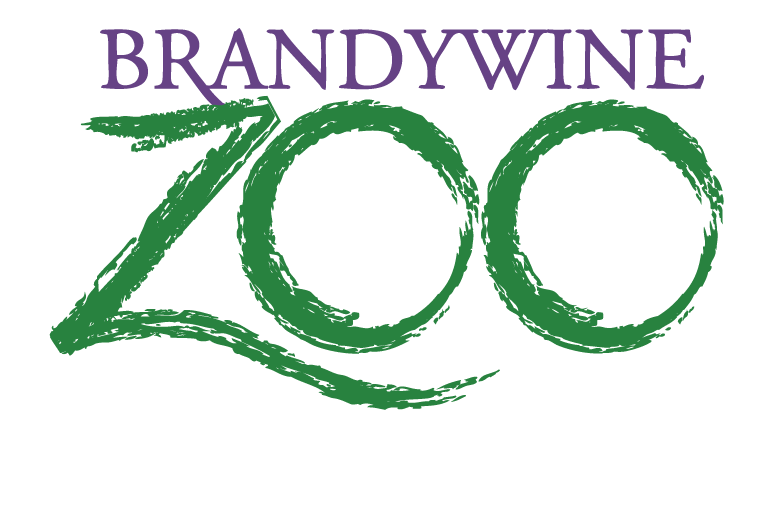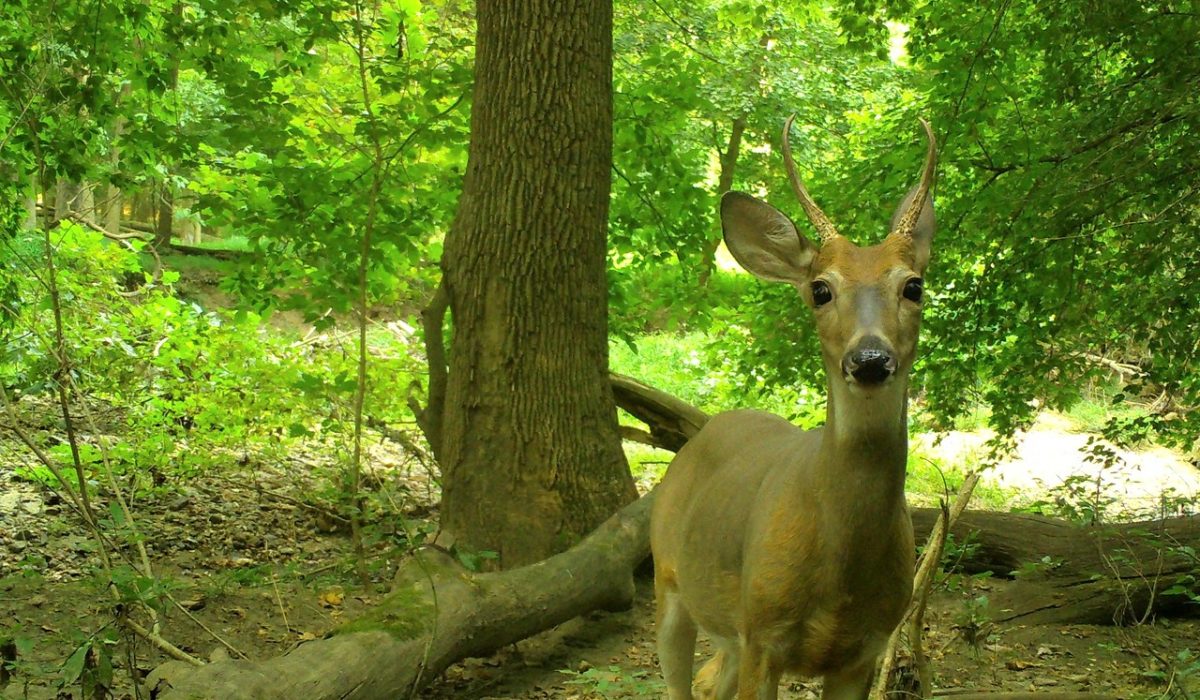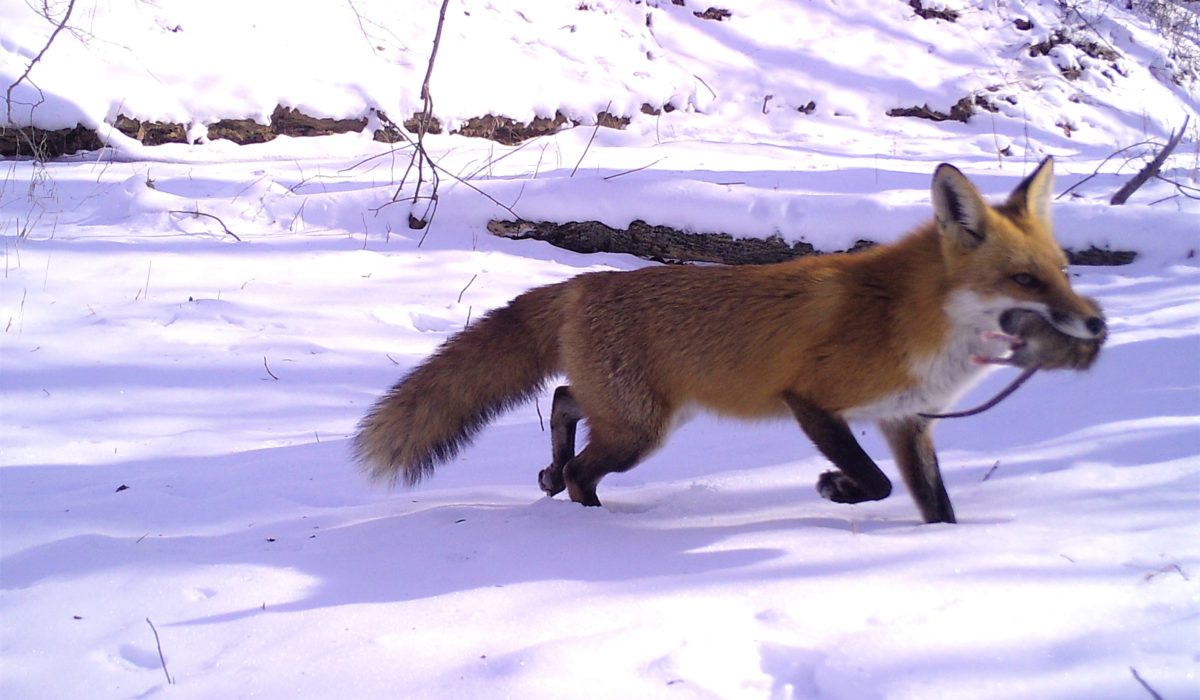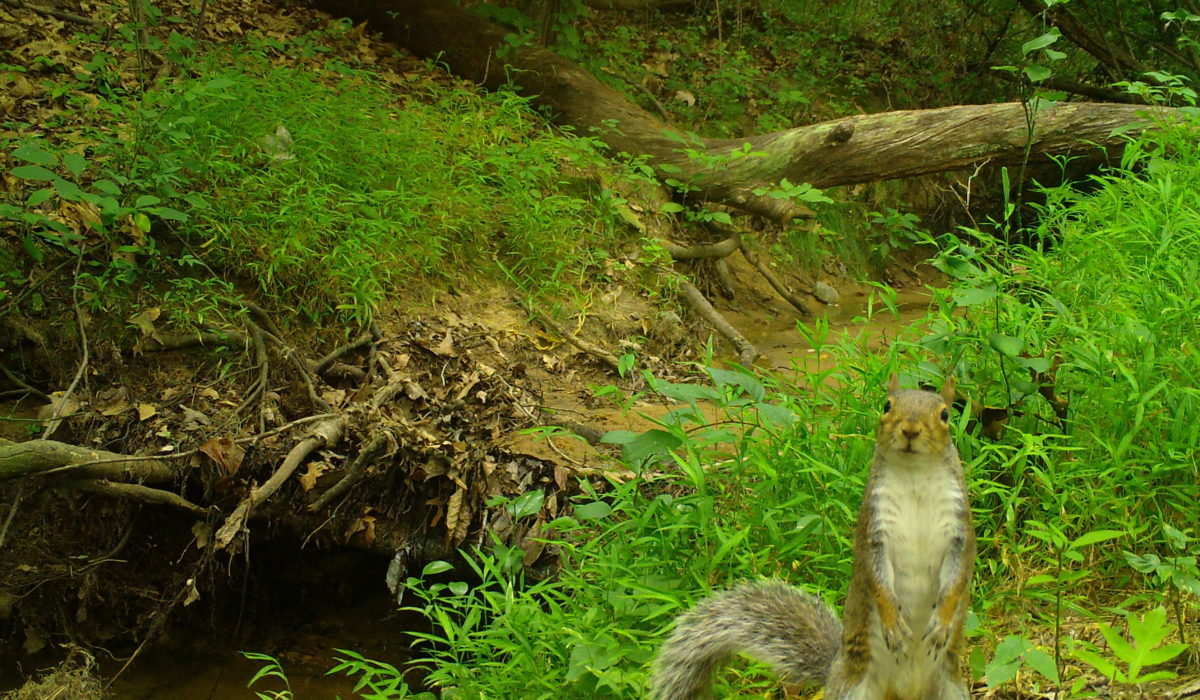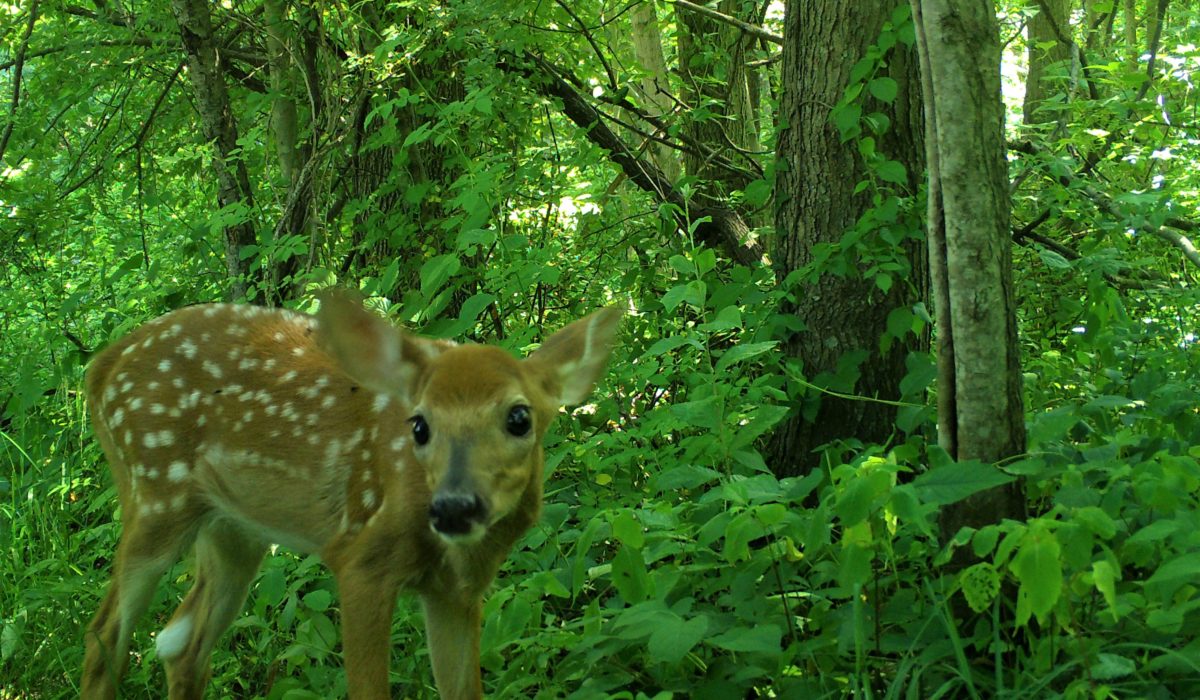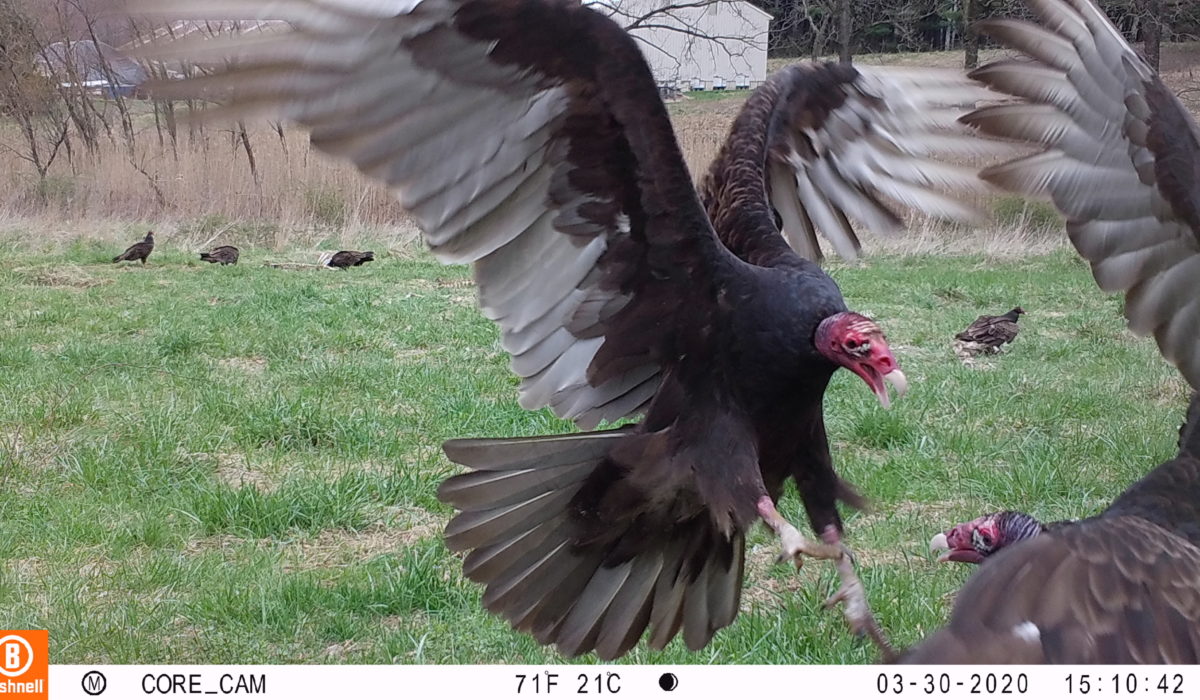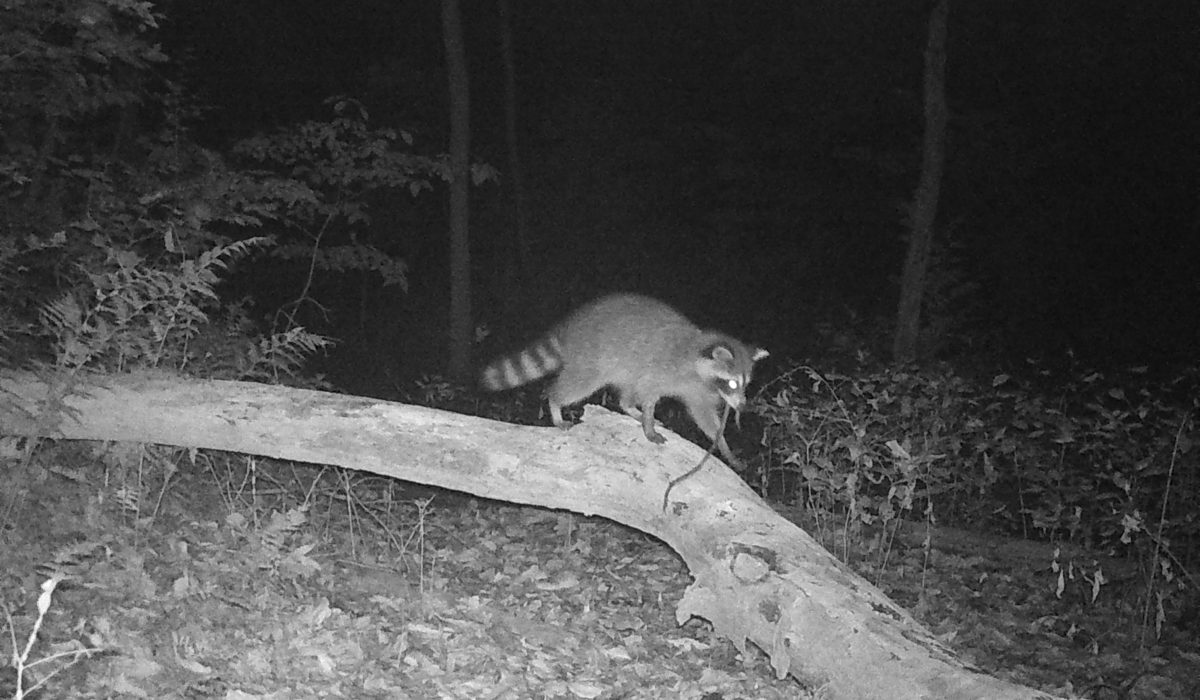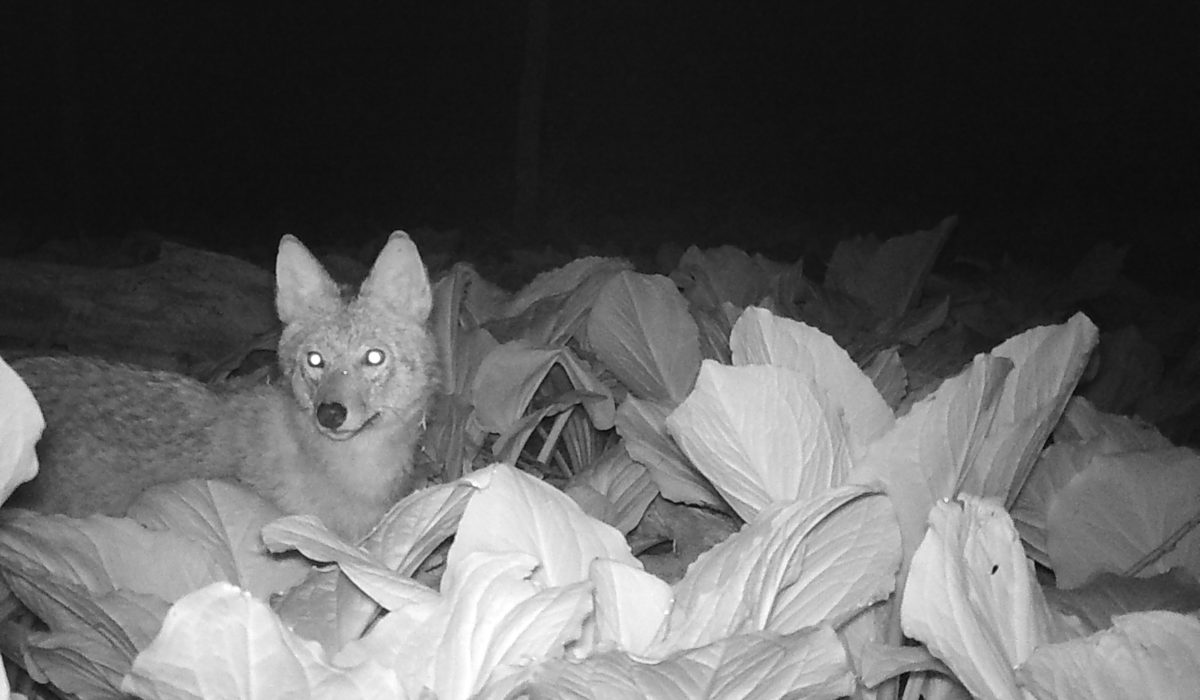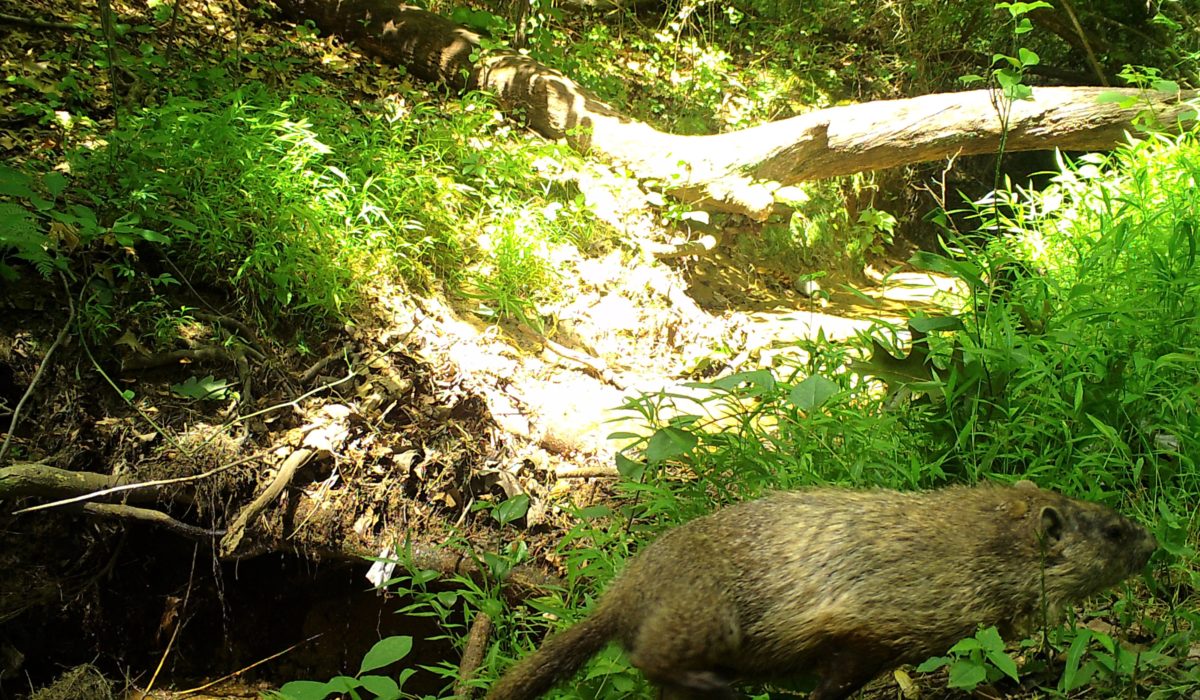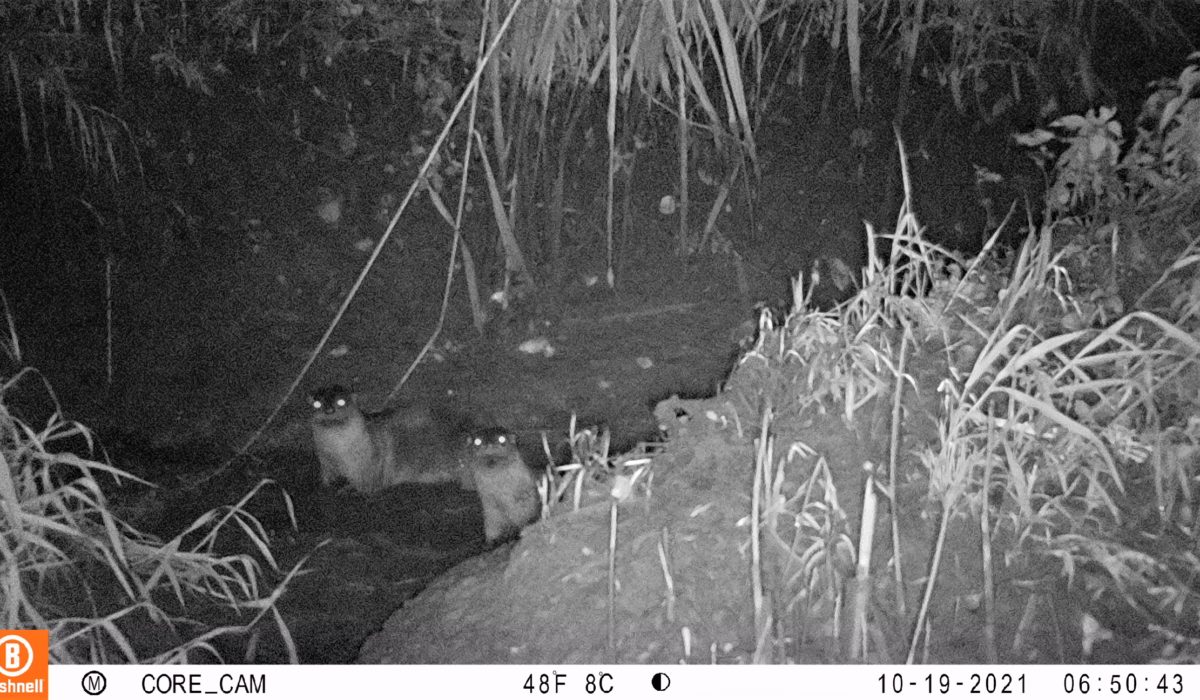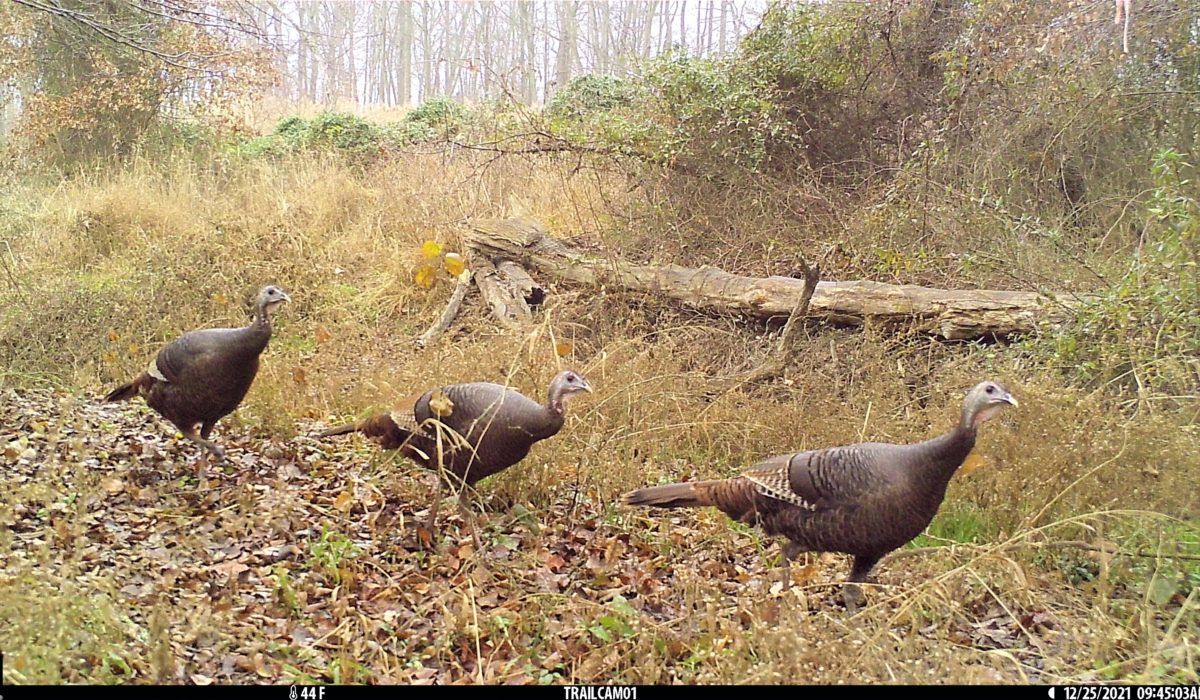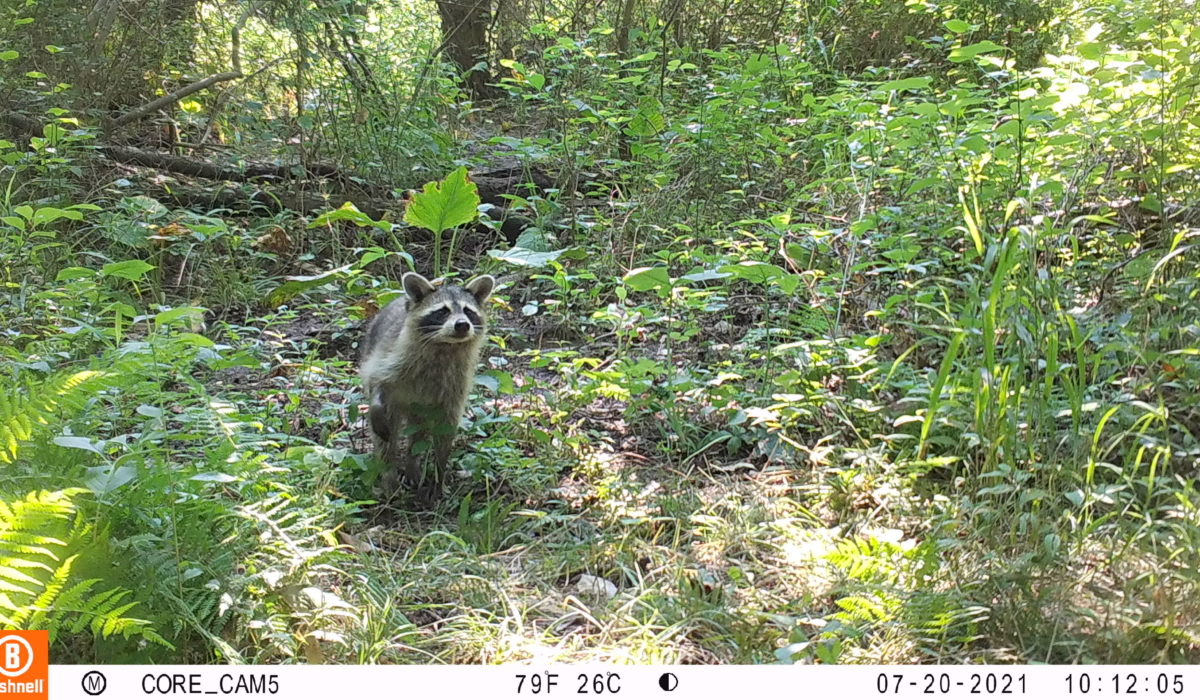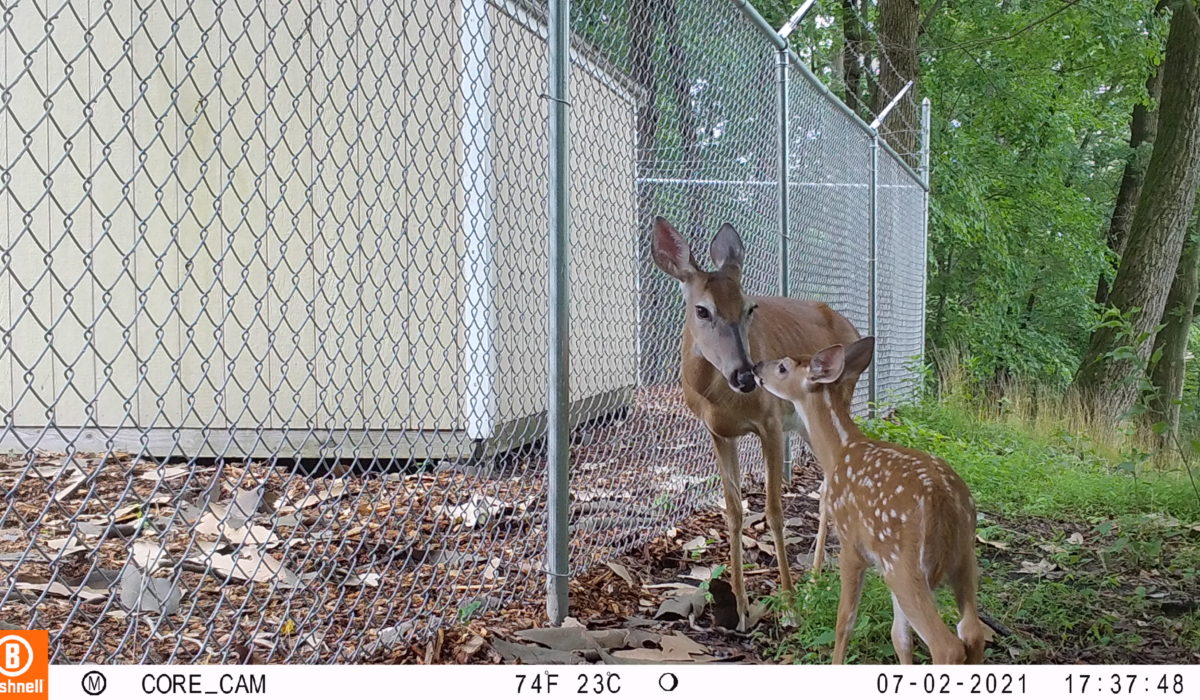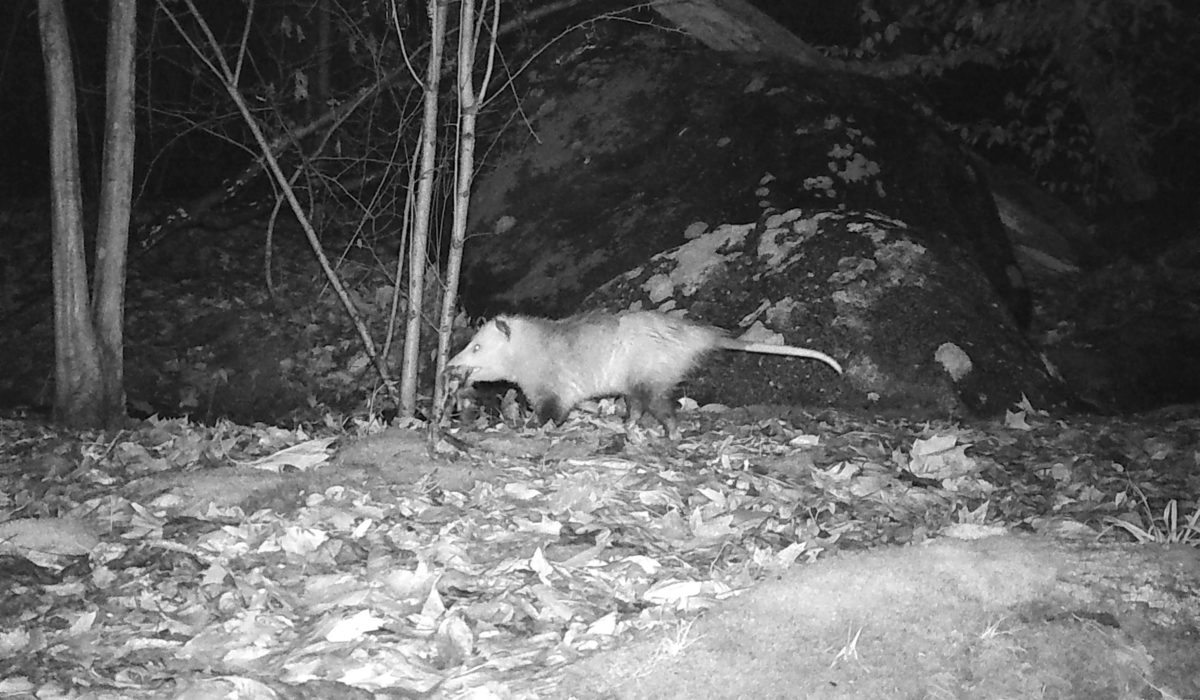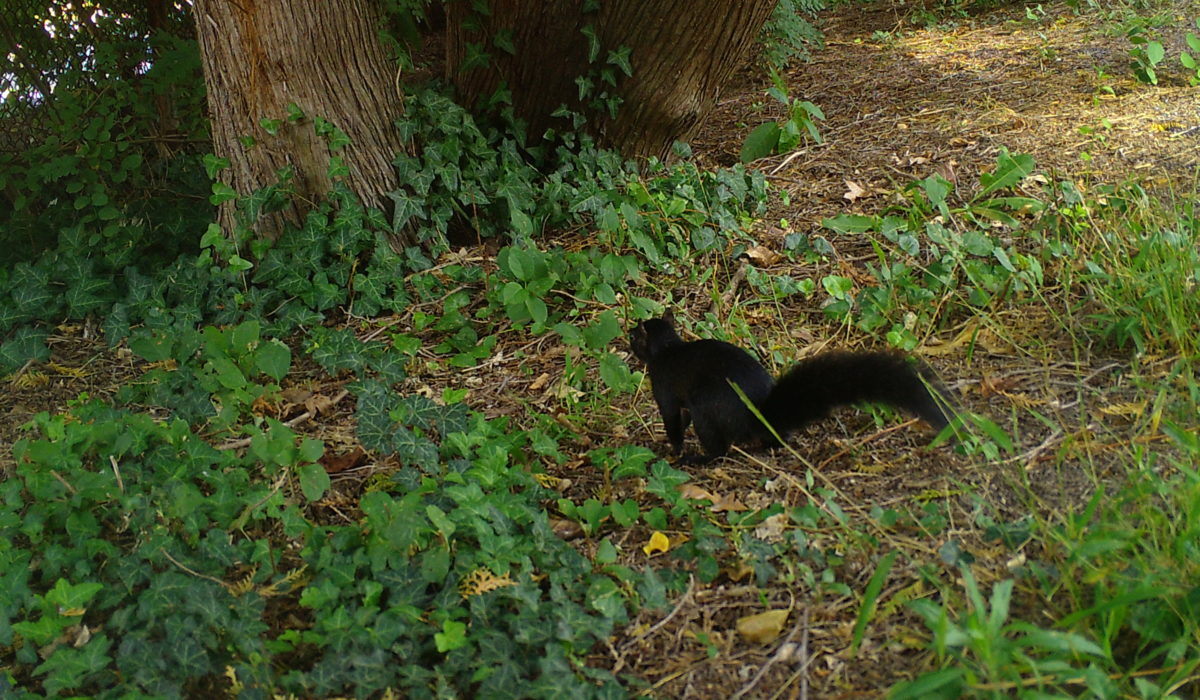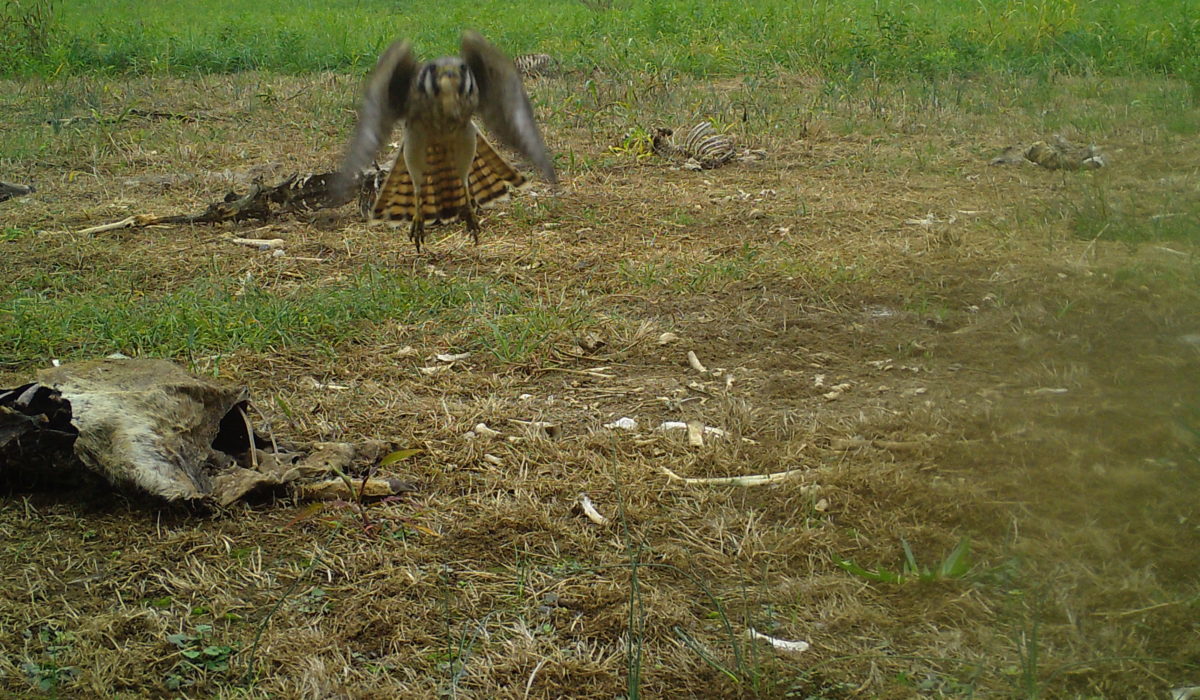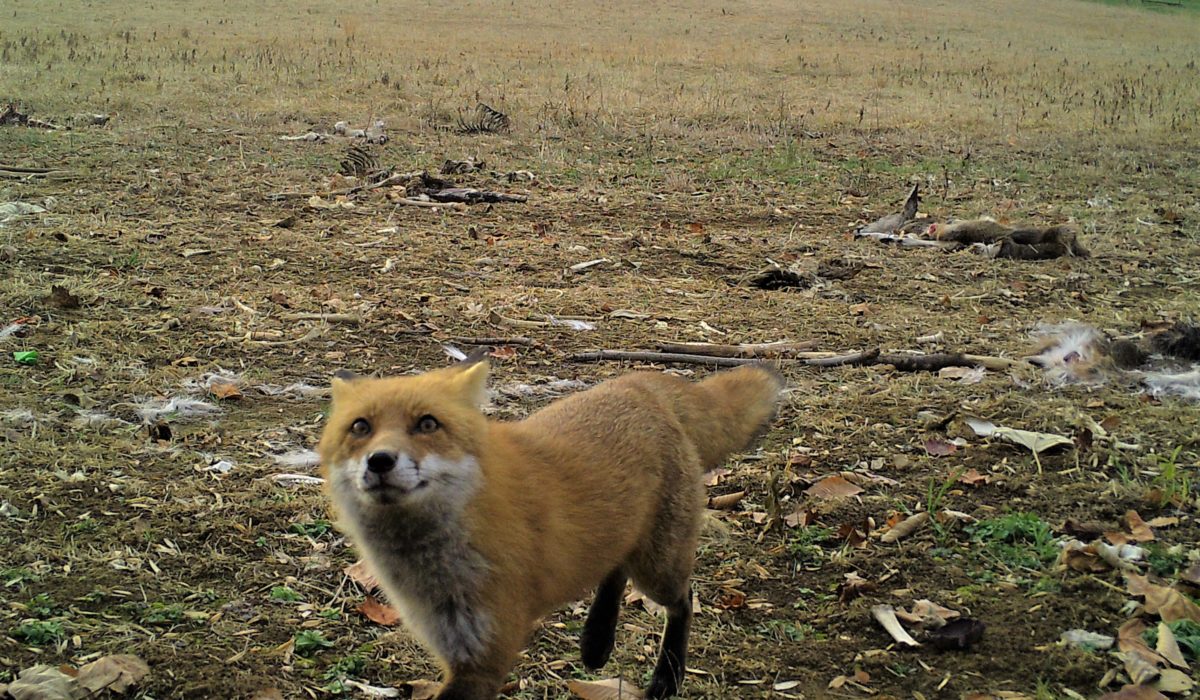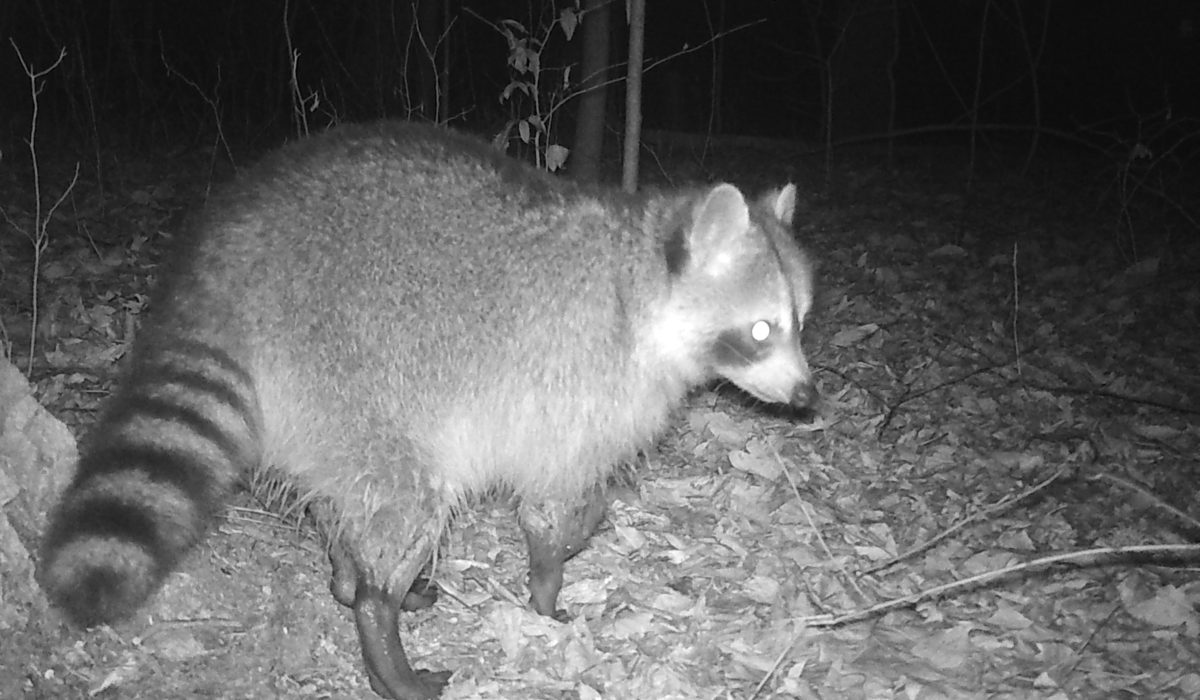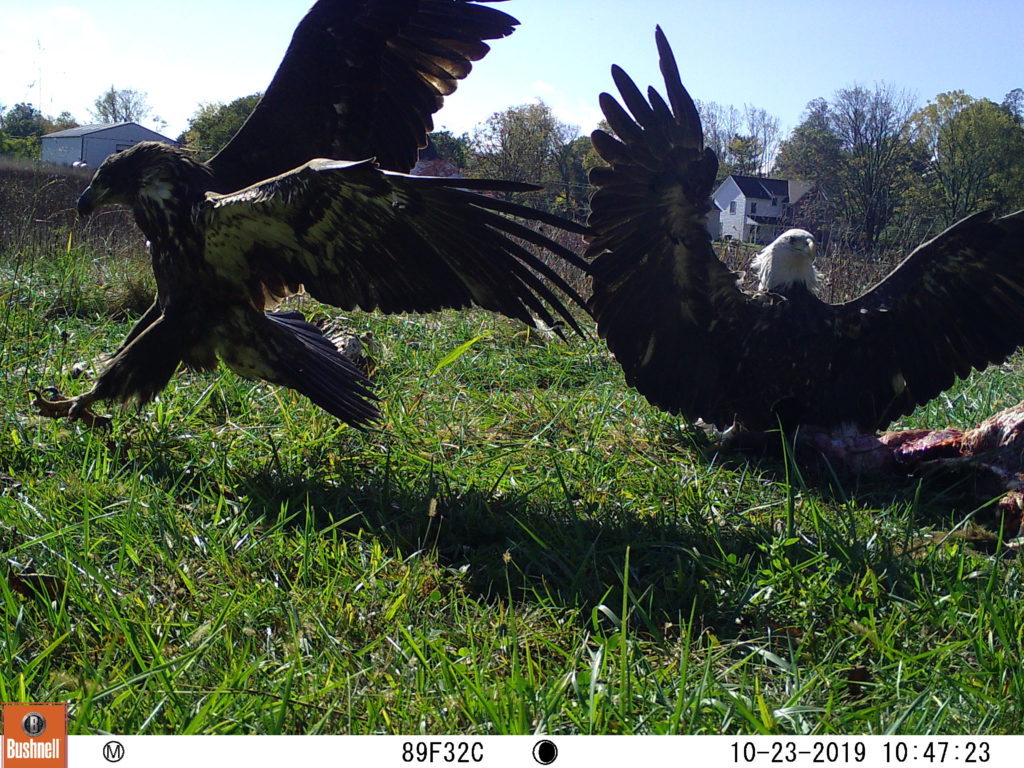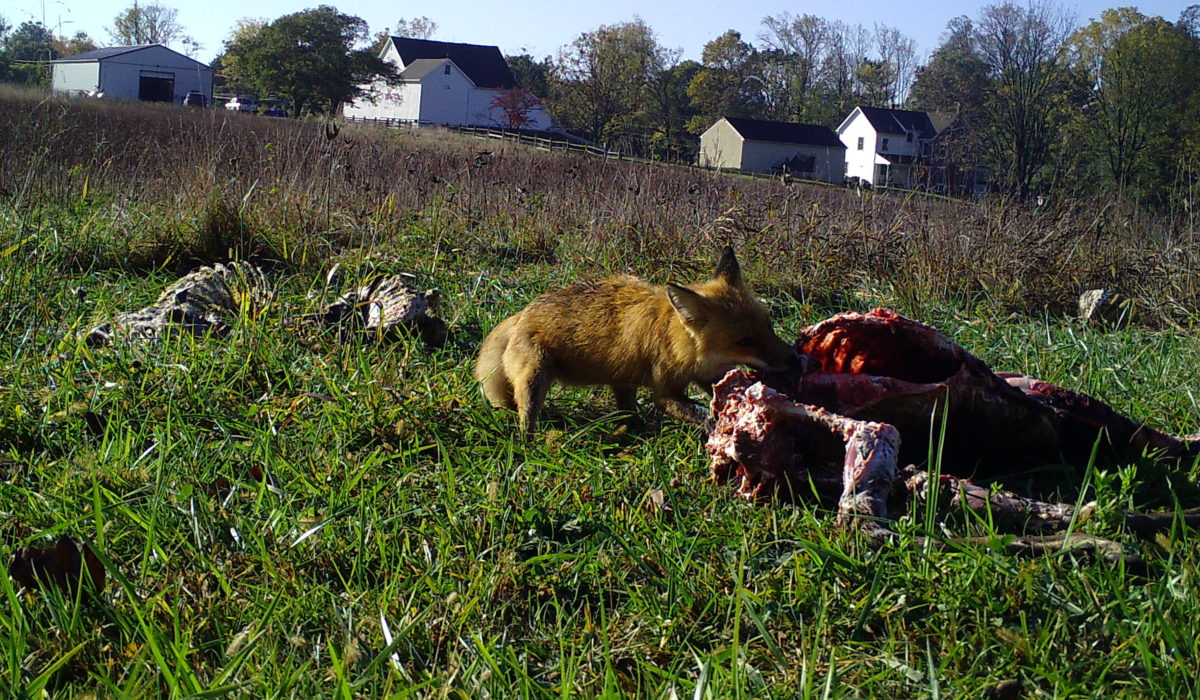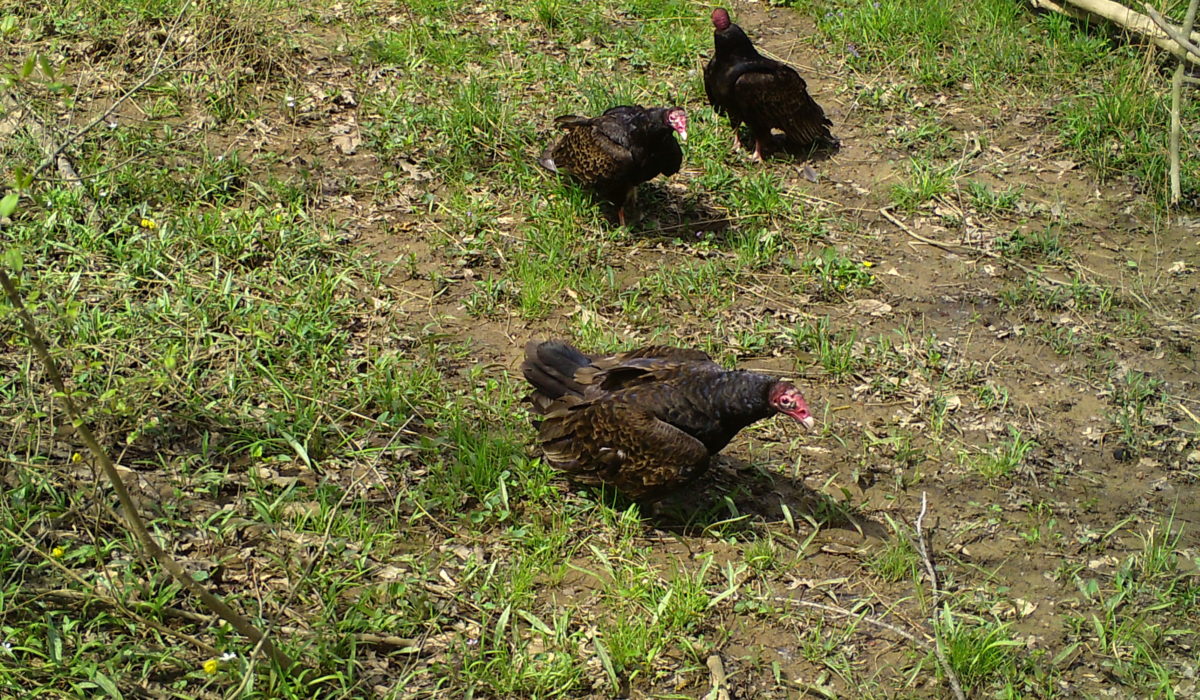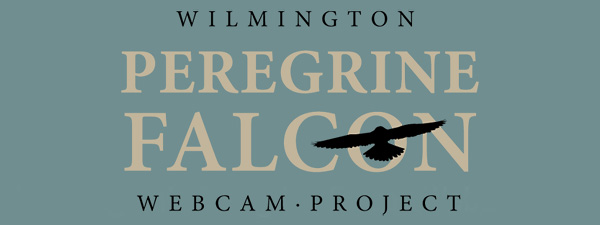Urban Wild
The Brandywine Zoo is studying wildlife in your backyard!
Since 2017, the Brandywine Zoo has been monitoring urban wildlife through several projects.
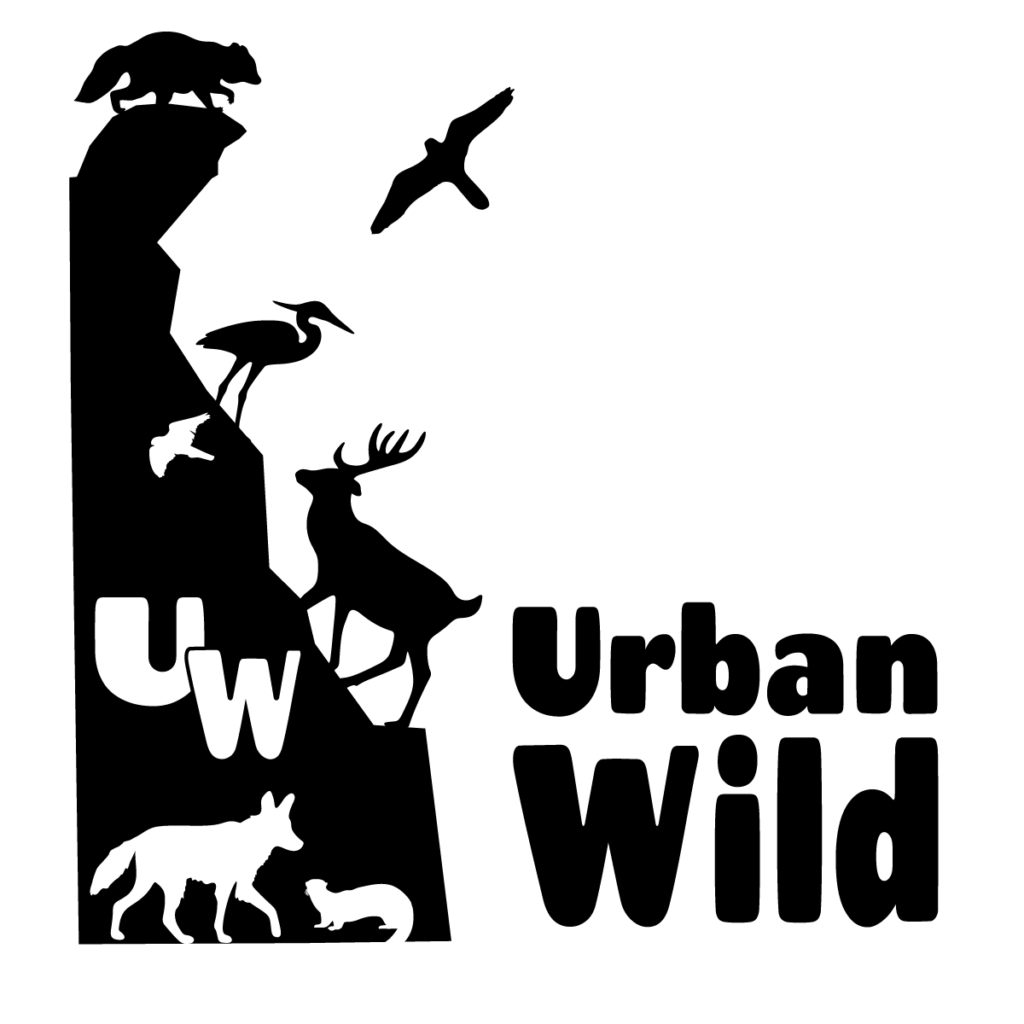
People and Animals in Urban Areas
Greater than 10% of the Earth’s total land surface is “urban land,” and the majority of people live in urban areas. Cities are typically not built with wildlife in mind, but nevertheless, they still contain important habitat. Here at The Brandywine Zoo, we are investigating the prevalence of terrestrial mammals found in urban to rural ecosystems across Northern Delaware and Southeastern Pennsylvania. Data collected will allow us to better understand species diversity in urban environments, how animals shift their behavior patterns in regard to levels of urbanization, and how this impacts spatial ecology. In understanding what species are most typical, and atypical, by grade of urbanization, as well as when they are most active, we hope to inform conservation and land use decisions, maximize positive human-wildlife interactions while limiting conflicts, and better connect communities in general to the wildlife living right in their backyards.
Project Goals:
- Connect residents of the Delaware Valley to the wildlife living in their backyards
- Understand how wildlife behavior is changing as our cities continue to grow.
In having a better understanding of urban ecosystems, we can help minimize human-wildlife conflict and maximize positive wildlife interactions.
Understanding Urban Biodiversity
Understanding varying levels of biodiversity within cities like Wilmington is pivotal to protecting it in the face of global urbanization. With the species data collected, our studies will additionally examine the effects of habitat fragment size and connectivity upon both ecological diversity and individual species distributions, predict biodiversity along a gradient of urbanization in Delaware, and analyze the relative importance of habitat quality, type, and location as well as the extent to which wildlife utilize ‘urban greenways’ both as wildlife corridors and as habitats in their own right. Outcomes from these analyses will not only help to push forward our understanding of ecology in Wilmington and other cities, but will also provide useful information to planners and managers as we work with them to plan for biodiversity preservation in urban regions.
For more information email conservation@brandywinezoo.org
Wildlife Programs
People and Urban Wildlife
One primary goal in conducting these various urban wildlife studies is to serve as a source of information for the public, as well as to operate as a centralized repository for urban wildlife data and public reporting of wildlife sightings. It is critically important that with public awareness comes education revolving around peaceful coexistence, better understanding wildlife behavior, and proactive measures people can take to reduce conflict, responsible management and land use decision-making, and developing empathy for wildlife.
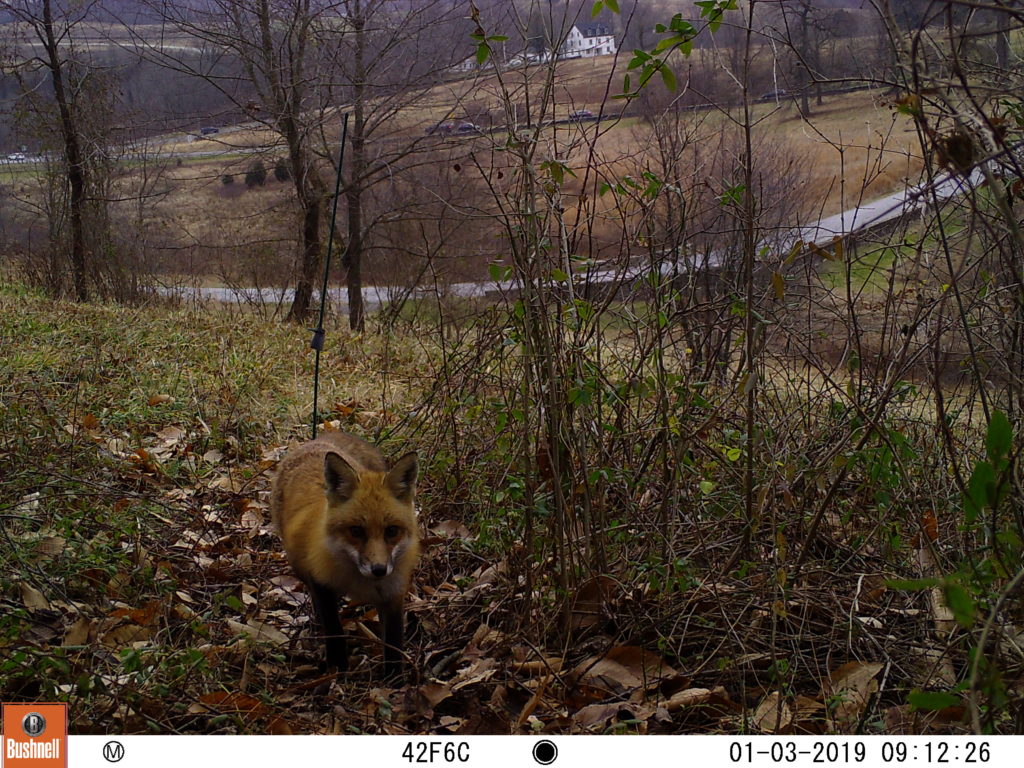
Cities provide a unique opportunity for science. They are the fastest growing ecosystem on the planet and the high number of people living in them provides an untapped and valuable opportunity to engage the public in the process of ecological research and connect people to nature. Most Delawareans are unaware of the diversity of wildlife that call this state home, particularly in the highly urbanized area where this project takes place. Awareness of the species revealed in these studies may bring a predictable mix of emotions from the public, from fear and concern to curiosity and wonder. Understanding the local wildlife sharing our urban areas will allow us to mitigate human-wildlife interactions, make recommendations to urban planners and land managers for least-impactful human activities for sensitive species, and contribute to a variety of additional research or plans that will benefit the local population as well as wildlife. The data collected in this project are ultimately helping us understand wildlife behavior, the impacts human development and activity has on the wildlife we share our cities with, as well as how that wildlife adapts to life with us.
Urban Wildlife Information Network
In the fall of 2017, The Brandywine Zoo partnered with the Lincoln Park Zoo’s Urban Wildlife Institute (UWI) to conduct passive monitoring of wildlife within the State of Delaware. This project specifically focuses on monitoring green spaces inside and outside of Wilmington, Delaware at field sites along an urban to rural gradient. This monitoring project is conducted using game cameras placed along a transect running through rural to urban areas in New Castle County. The images and activities observed will be used to help connect people to nature and educate the public about the importance of biodiversity within a natural community.
The Urban Wildlife Information Network (UWIN), is a collaborative group of cities working on urban wildlife projects across North America. The Brandywine Zoo was the first the organization on the East Coast partnered with the UWIN, which is now in more than 40 cities across the globe, as well as the first additional zoo to partner with Lincoln Park Zoo for this initiative. We joined with the goal to study and report on urban wildlife activities in the Delaware valley to the greater network, but also to better connect our own communities to the wildlife in our backyards.
2022 UWIN Partners Map
One goal of UWIN is to provide resources to study, conserve, and manage wildlife from the city to individual site level. Collaboration with UWIN partners includes other urban wildlife monitoring programs across North America, but also with city planners, landscape architects, and land managers, who are all working together to develop, inform, and guide urban wildlife conservation efforts in the future. Our partnership also provides quality information that can help advance scientific understanding of urban wildlife species and their behaviors. These advances in understanding can aid city planners and architects on best-use-practices for decreasing the impacts human activities have on urban wildlife populations.
Help us monitor wildlife in the region
VOLUNTEER TODAY!
Volunteers for this project would help our research team deploy cameras around New Castle County, Delaware for our monitoring efforts. Various camera deployment projects range from three times a month, four times per year (January, April, July, and October deployments) to several other ongoing projects that take place year-round.
At minimum, a volunteer for this project would be assigned 3-5 camera locations for the seasonal deployments (January, April, July, and October), where they would deploy cameras prior to the first of the month, check back on cameras at two weeks for battery life and memory cards, and pull cameras from the field at 1 month (no less than 28 days after deployment). Deployments and maintenance, depending on location, could take up to an hour per site, plus driving time, but could feasibly be completed in one day or two half-days.
This opportunity requires being outdoors, in all weather, for extended periods of time, bending, lifting, or carrying sometimes heavy objects, traversing uneven or even slippery terrain outdoors, crossing streams, climbing riverbanks, etc.
Carnivore Ecology Project
Coyote
Coyotes, historically absent from Delaware, have been slowly colonizing the state for the last decade and their range is not well known. Where they are present, they fill the apex carnivore role needed to balance deer and other prey populations, while also influencing small carnivore population guilds. Their populations are higher in Pennsylvania, and we hope to explore the relationship between these carnivores and the biodiversity at the places they are, and are not, found.
More specific studies on urban carnivores in our region will allow us to better understand carnivore guilds and how coyotes are influencing the diversity and populations of small to medium-sized carnivores, known as mesopredators, that find themselves in the “middle” of the food chain, such as raccoon, red and grey fox, skunk, and opossum. Studies have shown that coyotes increase biodiversity by preying on these other small carnivores, who in turn prey on birds and their eggs, rabbits, groundhogs and other small animals. We hope to study the effects of small and medium carnivores across various ecosystems and better understand what species are filling the role of “apex” predators at different locations and levels of urbanization. As we see more coyote move into Delaware from neighboring states, we have the potential to see shifts in predatory guilds occur as these carnivore populations change and expand.
Furthermore, as larger predators like coyote expand their territories in Delaware, inevitably we expect to see increased public awareness, wariness, or even rising levels of potentially negative interactions. By informing Delaware residents with education about co-existence with carnivores like coyote, we hope to put Delawareans at ease and help them discover ways they can best live alongside these carnivores.
Another Urban Wild project focuses on urban carnivore ecology, which studies carnivore guilds and focuses on identifying the presence of North American river otter and coyote across Northern Delaware. In this project, we are looking at how these cryptic, apex carnivores are influencing mesopredator (medium-sized carnivores) guilds and species diversity, as well as how they are influenced by levels of urbanization and human disturbance.
These two species, coyote and otter, have very different public perceptions, with charismatic otters well-loved and celebrated while coyote hold the title of most persecuted carnivore in North America-with over half a million (about one per minute) exterminated annually in the US. If the otter is the flagship species for public adoration, the coyote is a flagship for all misunderstood and exploited carnivores. The carnivore ecology project will help to shed some light on the natural history and ecology of both these species in Delaware and Southeastern Pennsylvania while generating enthusiasm and buzz for our citizen science project as we share camera images with awareness messaging.
Help us learn where coyotes are located by reporting them to our iNaturalist project.
iNaturalist is a free website and app for community scientists to record, log, and identify wildlife, plants, and anything natural. Find out more about our community science programs here.

River Otter near the Christiana Mall, DE
RIVER OTTER
Otters are an indicator species for ecosystem and watershed health. They are sensitive to water pollution and tend to be absent from very polluted waterways. The presence or absence of these charismatic species can tell us a lot about the health of a habitat. Our studies of North American river otters in urban ecosystems will additionally help to raise awareness of this publically loved species and its ecology. Our camera trapping project will hopefully shed some light on this charismatic species and help generate enthusiasm and buzz for our citizen science project.
River otters’ sensitivities to water pollution but recent comeback across North America as watersheds have improved over the years is a good sign, however it is unclear how many call our urban waterways in Delaware home. As sentinels for watersheds, and their presence, absence, health, and fertility can offer us valuable information on the health of the watersheds in which they live not only for their own sake but also the health of other wildlife and that of people utilizing the same water. Their increasing presence is good news and shows that we have made enough improvements in Delaware watersheds, and we hope to use this species as a platform for continued watershed support and research.
HELP US MONITOR WILDLIFE IN THE REGION!
VOLUNTEER TODAY!
Volunteers for this project would help our research team deploy cameras around New Castle County, Delaware for our monitoring efforts. Various camera deployment projects range from three times a month, four times per year (January, April, July, and October) to several other ongoing projects that take place year-round.
At minimum, a volunteer for this project would be assigned 3-5 camera locations for the seasonal deployments (January, April, July, and October), where they would deploy cameras prior to the first of the month, check back on cameras at two weeks for battery life and memory cards, and pull cameras from the field at 1 month (no less than 28 days after deployment). Deployments and maintenance, depending on location, could take up to an hour per site, plus driving time, but could feasibly be completed in one day or two half-days.
This opportunity requires being outdoors, in all weather, for extended periods of time, bending, lifting, or carrying sometimes heavy objects, traversing uneven or even slippery terrain outdoors, crossing streams, climbing riverbanks, etc.
SCAVENGERS
This project investigates the succession of scavengers at ephemeral and reliable food sources. What does this mean? Basically, what scavengers are opportunistically making use of deceased animals (carcasses) at different locations across New Castle County and Southeastern Pennsylvania, what habitat and human features may dictate what species show up at varying locations, and in what order.
Why does this matter? Scavengers are an important part of any ecosystem. They provide vital waste removal services for people and may help reduce the spread of disease, especially when avian scavengers like vultures consume a carcass before mammalian ones can. Understanding our scavenging community in the Delaware Valley can help us learn about things like wildlife disease risks, which species are providing these services in what locations, or even the risks some of these food sources present to wildlife, including lead poisoning (from hunter gut piles left for scavengers to consume).
Volunteer with this Project!
Volunteers for this project would help our research team deploy cameras around New Castle County, Delaware for our monitoring efforts at animal carcass sites. This project is ongoing and takes place year-round.
Volunteers for this project may assist staff in deploying and checking cameras or setting carcass bait stations.
This opportunity requires being outdoors, in all weather, for extended periods of time, bending, lifting, or carrying sometimes heavy objects, traversing uneven or even slippery terrain outdoors, crossing streams, climbing riverbanks, etc.
Community Science Opportunities
We are currently not accepting volunteers, but to check back soon!
You can help our wildlife monitoring programs by becoming a community scientist for us! Community scientists, sometimes called citizen scientists, are anyone from the community in which we work who want to help collect research data!
Get started by joining our iNaturalist project and use your phone to snap photos and log data any time, from anywhere!
Join our iNaturalist project!
Use your phone. Snap photos. Submit Data!
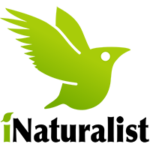 iNaturalist, available as an app or online, is a citizen science program that allows users to snap photos of any plant or animal and crowdsource IDs. Images on iNaturalist can be used by researchers for focused projects on specific species or regions.
iNaturalist, available as an app or online, is a citizen science program that allows users to snap photos of any plant or animal and crowdsource IDs. Images on iNaturalist can be used by researchers for focused projects on specific species or regions.
iNaturalist users can join the Brandywine Zoo’s Urban Wildlife Monitoring of Delaware project to their user profile by doing a projects search, then start adding your photos and tagging wildlife! By getting involved with iNaturalist you can help us learn what animals are using Delaware’s landscape!
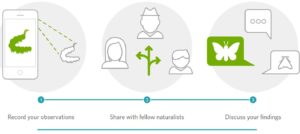
Camera Deployment Team
Volunteers for this project would help our research team deploy cameras around New Castle County, Delaware for our monitoring efforts. Various camera deployment projects range from three times a month, four times per year (January, April, July, and October) to several other ongoing projects that take place year-round.
This opportunity requires being outdoors, in all weather, for extended periods of time, bending, lifting, or carrying sometimes heavy objects, traversing uneven or even slippery terrain outdoors, crossing streams, climbing riverbanks, etc.
Photo ID Team
Help us from the comfort of your own home! We have lots of camera trap photos that need identifying, and an online database where all this occurs. All you need is a computer with internet connection, the comfort in navigating a photo ID website (check out Zooniverse for examples of something similar to what you’d be doing), a general knowledge of wildlife ID (we’ll provide you with an ID guide for DE wildlife), and an interest in looking at photos of interesting animals and lots and lots of squirrels!
In partnership with the Delaware Ornithological Society’s (DOS) long-running Peregrine Falcon nest monitoring project, The Brandywine Zoo is helping to coordinate volunteer monitoring efforts during falcon fledging.
Since 1992, DOS has been monitoring a nesting pair of Peregrine Falcons who annually take up residence in a man-made nest box in Downtown Wilmington each year. The current falcons are “Trinity” and “Red Girl,” and the live webcam hosted by DOS sees up to 10,000 viewers per day during peak nesting season!
For more details about this project, please visit the DOS Wilmington Peregrine Falcon Watch web page.

Help us monitor as the fledglings take flight! Photo- DOS/Wilmington Falcons
Watch the Live Nest Box Camera on YouTube
Help us monitor falcon fledglings as they take their first flights!
BECOME A VOLUNTEER FALCON MONITOR!
Each year, as the season’s new falcon chicks approach fledging (taking their first flight), volunteer monitors are brought together to watch for these first harrowing flights. Volunteers take two-hour shifts from just before dawn to just after dusk to watch for these flights. This is important because sometimes the fledglings end up “grounding” themselves (they end up on the ground and don’t have the wing strength necessary to get enough lift to get to a higher location) and, because of their inexperience with flying cannot get back up to their nest.
Volunteers will go recover the fledgling and return it to the roof of the Brandywine Building if this happens.
Fledgling monitoring usually occurs around Memorial Day, and lasts from 7-10 days.
If you’re interested in becoming a monitor, you may apply to become a volunteer through Delaware State Parks. Select the Zoo and specify that you want to be involved with the peregrine project.

Monitors keep watch on Wilmington’s residents. Photo- DOS/Wilmington Falcons
Wilmington Data in Scientific Literature
Our data are shared with multiple international networks (Urban Wildlife Information Network, Snapshot USA) as well as independent researchers, upon request, to help give insight on how to both conserve and co-exist with urban wildlife and an ever-urbanizing world. Below is a list of publications using data from Wilmington, Delaware.
-
Cove, M. V. et al. 2021. SNAPSHOT USA 2019: a coordinated national camera trap survey of the United States. Ecology 102(6):e03353. https://doi.org/10.1002/ecy.3353
- Magle, S. B., Fidino, M., Sander, H. A., Rohnke, A. T., Larson, K. L., Gallo, T., Kay, C. A. M., Lehrer, E. W., Murray, M. H., Adalsteinsson, S. A., Ahlers, A. A., Anthonysamy, W. J. B., Gramza, A. R., Green, A. M., Jordan, M. J., Lewis, J. S., Long, R. A., MacDougall, B., Pendergast, M. E., … Schell, C. J. (2021). Wealth and urbanization shape medium and large terrestrial mammal communities. Global Change Biology, 00, 1–14. https://doi.org/10.1111/gcb.15800
- Fidino, M., Gallo, T., Lehrer, E. W., Murray, M. H., Kay, C. A. M., Sander, H. A., MacDougall, B., Salsbury, C. M., Ryan, T. J., Angstmann, J. L., Belaire, J. A., Dugelby, B., Schell, C. J., Stankowich, T., Amaya, M., Drake, D., Hursh, S. H., Ahlers, A. A., Williamson, J., … Magle, S. B. (2020, December 22). Landscape‐scale differences among cities alter common species’ responses to urbanization. The Ecological Society of America. Retrieved September 15, 2021, from https://esajournals.onlinelibrary.wiley.com/doi/abs/10.1002/eap.2253
- Gallo, T., Fidino, M., Gerber, B., Ahlers, A. A., Angstmann, J. L., Amaya, M., Concilio, A. L., Drake, D., Gay, D., Lehrer, E. W., Murray, M. H., Ryan, T. J., St Clair, C. C., Salsbury, C. M., Sander, H. A., Stankowich, T., Williamson, J., Belaire, A., Simon, K., Magle, S.B. (2022, March 31). Mammals adjust diel activity across gradients of urbanization. eLife. https://doi.org/10.7554/eLife.74756.sa0
